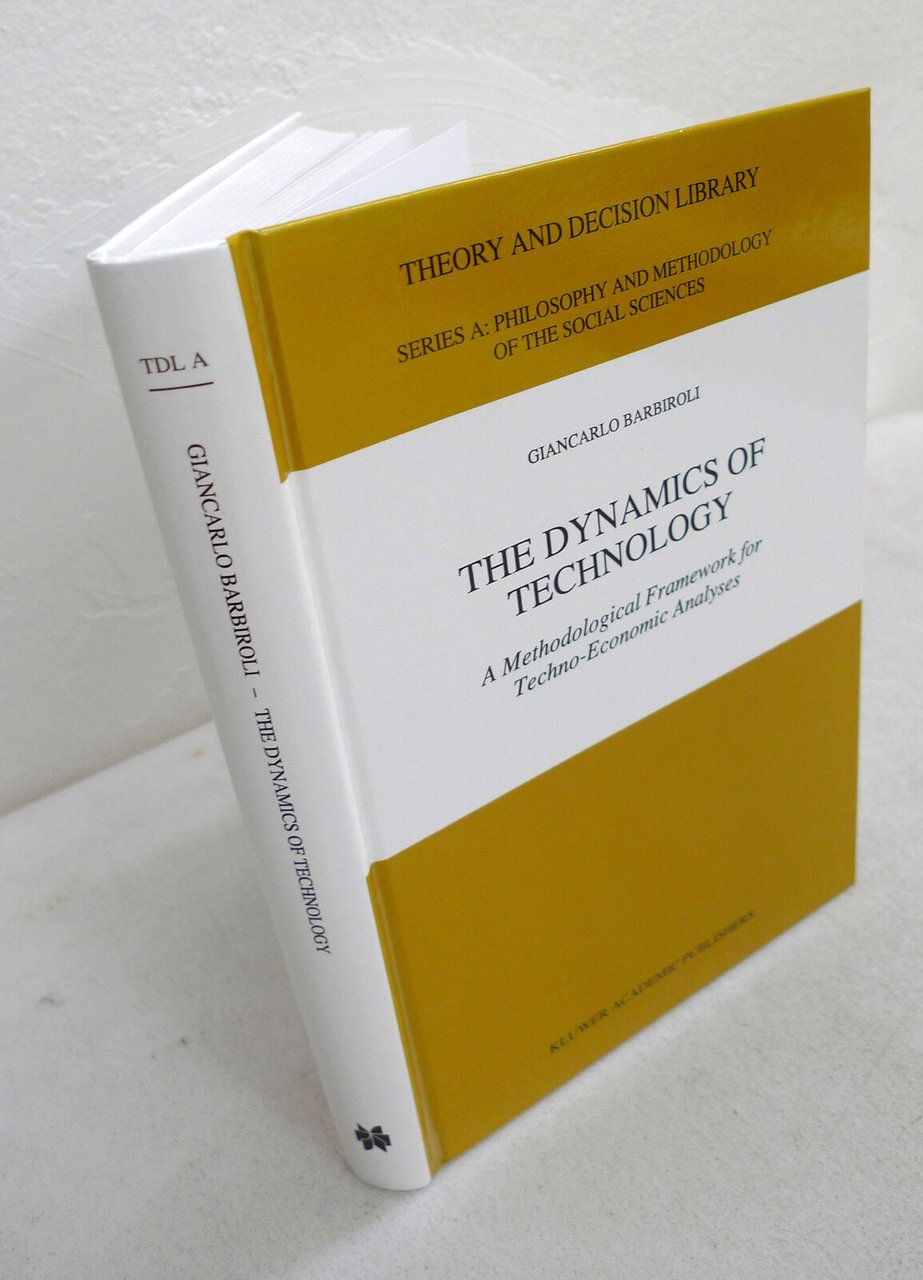
Périodiques
Giancarlo Barbiroli,THE DYNAMICS OF TECHNOLOGY,1997[economia,scienza,business
99,00 €
Modo Infoshop
(Bologna, Italie)
Les frais d'expédition corrects sont calculés une fois que l'adresse de livraison a été indiquée lors de la création de la commande. Un ou plusieurs modes de livraison sont disponibles à la discrétion du vendeur : standard, express, economy, in store pick-up.
Conditions d'expédition de la Librairie:
Pour les articles dont le prix est supérieur à 300 euros, il est possible de demander un plan de paiement échelonné à Maremagnum. Le paiement peut être effectué avec Carta del Docente, Carta della cultura giovani e del merito, Public Administration.
Les délais de livraison sont estimés en fonction du temps d'expédition de la librairie et de la livraison par le transporteur. En cas de retenue douanière, des retards de livraison peuvent survenir. Les frais de douane éventuels sont à la charge du destinataire.
Pour plus d'informationsMode de Paiement
- PayPal
- Carte bancaire
- Virement bancaire
-
-
Découvrez comment utiliser
votre Carta del Docente -
Découvrez comment utiliser
votre Carta della cultura giovani e del merito
Détails
Description
Giancarlo Barbiroli,
THE DYNAMICS OF TECHNOLOGY.
A METHODOLOGICAL FRAMEWORK FOR
TECHNO-ECONOMIC ANALYSES.
Kluwer academic publishers,
Dordrecht/Boston/London, 1997,
copertina rigida, cm.24,5x16,5, pp.337,
collana "Theory and decision library" -
"Series A: Philosophy and methodology
of the social sciences" n.25,
testo in inglese,
peso: g.673
cod.1641
CONDIZIONI DEL LIBRO: come nuovo
Contents
Introduction 1
Chapter 1 features of technology and technological dynamics 7
1.1 Technology as a production function and as a system 7
1.2 Types and forms of technology 11
1.3 The scientific approach to technological dynamics 14
1.4 Technological substitutability 16
1.5 The operative properties of technologies 20
1.6 The dissipative properties of technologies: an evolutionary view 26
1.7 Technology and scale effects 33
1.8 Technology/employment ratio 35
1.9 The appropriateness of technologies 35
Chapter 2 the innovative cycle 43
2.1 The economic cycle of products and technologies 43
2.2 The origin of technological cycles 45
2.3 Endogenous and exogenous parameters prompting the innovative cycle 47
2.4 Innovation and company size 50
2.5 Indicators of technological innovation 53
2.6 Technology transfer: times and costs 57
Chapter 3 technological dynamics and knowledge 61
3.1 Information and knowledge as strategic resources 61
3.2 Source, quality, cost and value of information 62
3.3 Knowledge and innovation 64
3.4 Action at the national level to support innovation 68
3.5 The role of technopolis in technological dynamics 69
3.6 Technopolitan experiences in the United States and Japan 76
3.7 Case studies of incubator experiences 81
Chapter 4 the dynamics of production technologies and structures 85
4.1 The new needs of society 85
4.2 Cleaner production technologies 86
4.3 Modular production 91
4.4 Group technology and cell production 94
4.5 Flexible manufacturing systems 97
4.6 Product-process matrix and operative flexibility strategy 100
4.7 Development strategies for flexible systems 106
4.8 Just-in-time manufacturing 108
4.9 Automation strategies 112
4.10 From economies of scale to economies of scope 115
4.11 Production decentralization 117
4.12 From systems to networks: non-competitive relations 123
Chapter 5 technological dynamics, efficiency and productivity 127
5.1 Measuring the several aspects of technical and economic efficiency
of production processes 127
5.2 Productivity and flexibility 157
5.3 Conditions for reconciling productivity and flexibility 161
Chapter 6 technological dynamics and quality issues 165
6.1 The multiple dimensions of quality 165
6.2 The evolution of quality approaches 169
6.3 Beyond total quality management 174
6.4 Improving quality and productivity 175
6.5 The environmental audit within a total quality strategy 177
6.6 Global performance indices for quality evaluation 180
6.7 The relationship between product quality and value 183
Chapter 7 economic effects of technological dynamics 191
7.1 The multi-dimensionality of effects 191
7.2 Effects on natural resources and raw materials 192
7.3 Effects on industrial productions 202
7.4 Effects on economic systems 209
7.5 Effects on the economic significance of commodities and
purchasing power 214
7.6 Effects on ecological systems 222
Chapter 8 methods for evaluating processes and technologies 237
8.1 Feasibility studies 237
8.2 Cost-engineering analysis 244
8.3 Estimating the economic incompatibility and
complementarity among branches of activity 246
8.4 Assessing the compatibility between
environment and production technologies 250
8.5 Assessing the life-cycle of products and processes 257
8.6 Measuring the development potential of technologies 261
8.7 Evaluating the strategic value of technologies 266
8.8 Analyzing competitiveness among technologies 278
Chapter 9 technology policy for sustainable development 289
9.1 Towards a science of technology policy 289
9.2 Setting indicators of sustainable development 290
9.3 Guidelines for the transformation of economic activities 296
9.4 Technological forecasting at the decision-making stage 298
9.5 Selecting and implementing sustainable technologies 300
9.6 Pursuing a real technological pluralism as a fundamental
condition for sustainability 305
9.7 A new economic hierarchy of technologies and products 307
9.8 Conditions and instruments to guide technological change 308
9.9 Concluding remarks 314
References 317
Index 333

